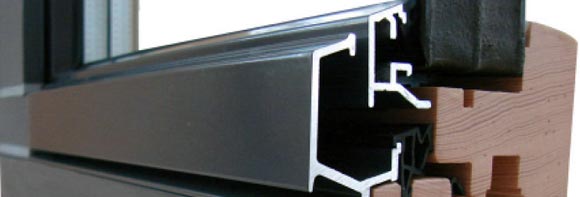Energy
• The heat energy (operational energy) lost through a window frame during its lifetime is likely to be greater than the energy used to manufacturer it (embodied energy)
• It is important to select a frame material with the least thermal conductivity. Wood is the least conductive followed by PVC and metal.
Wood, durability and environmental impact
The choosing of wood, its treatment and maintenance are crucial in reducing a window frame's environmental impact:
• Specify FSC sourced timber
• Transport adds embodied energy. Try and source UK timber whenever possible.
• For both hard and softwoods ensure that the specification explicitly excludes the use of sapwood.
• Painting wood adds significantly to its environmental impact. Either specify a naturally durable species that doesn't need treating or select a treatment with low impact. If frames are untreated, ensure that the client understands that initial colouring will change.
• If the wood is to be treated/painted, ensure that this is done in the factory prior to site. Factory painted frames double the period before the need to repaint.
Design
• The design of the sections will have an effect on performance. Design to maximise rapid drainage, maintain dry glazing channels and locate weather seals away from wet areas.
• Keep window panes as large as practically possible. Even with wooden frames, the metal spacers between the glass panes act as cold bridges. Large panes have less perimeter length than lots of smaller panes.
And on site ...
• Be careful to avoid damage to frames on site. Ensure that they are not used as formwork in wall openings
Materials
Composites
The creeping up of energy standards in recent years has been met with a degree of ingenuity amongst the manufacturers of advanced window systems. Its long been understood that different frame materials possess different strengths and weaknesses. For example, metal windows are renowned for their durability but not for their energy efficiency, whereas for, say, softwood windows, the opposite is true. By combining the relative strengths of different materials in one product, very high levels of performance are being achieved.
Perhaps the most successful combination so far in the development of composites has been that of aluminium-clad softwood cores. Although relatively new on the scene aluminium-clad timber frames are expected to have lifetimes of in excess of 40 years. PVC by comparison is around 25 years.
FSC durable temperate hardwood (oak, larch, sweet chestnut)













